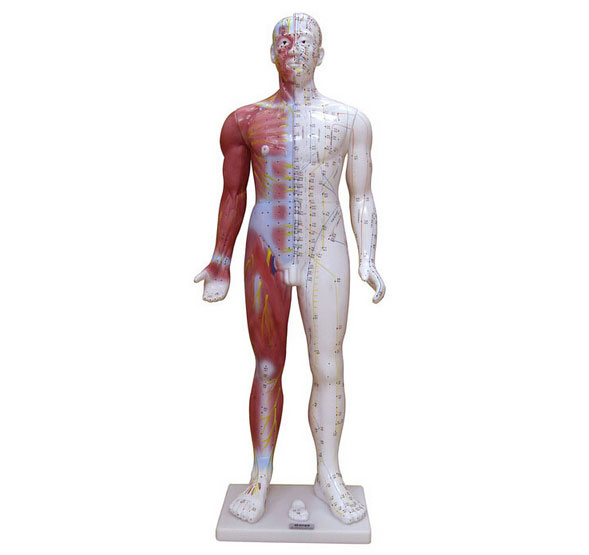When the model of fourteen meridian points shows the relationship between human anatomy structure and meridian system, it adopts a variety of exquisite design techniques, so that the relationship between them can be intuitively and clearly presented. Here is a detailed explanation of this:
First, layered display, clear structure
The fourteen meridian model is usually designed as a multi-layered structure to show the different systems of the human body separately. One side focuses on showing the anatomical structures of the human body, such as muscles, bones, nerves, etc., which are presented in real proportions and shapes to help learners understand the basic structure of the human body. The other side focuses on the meridians system, especially the 14 meridians and 361 meridians on them, which are precisely marked according to their position on the meridians, so that learners can clearly see the path of the meridians in the human body and the distribution of points.

Second, precise positioning, clear acupoints
When demonstrating the meridian system, the model pays special attention to the precise positioning of acupoints. Each point is marked according to its actual position on the meridian, and the way of marking is clear, such as using different colors or symbols to distinguish the points of different meridians. In addition, the model may also be accompanied by detailed acupoint instructions or illustrations, so that learners can further understand the name, location, and main functions of each acupoint.
Three, combined with anatomy, understanding the relationship
By showing the anatomy in conjunction with the meridian system, the model makes it easier for learners to understand the relationship between the two. For example, learners can see how meridians cross muscle layers, bypass bone structures, and are adjacent to nerves and blood vessels. This intuitive display helps learners to deeply understand the physiological function and pathological changes of the meridian system, as well as the mechanism of action of TCM treatment methods such as acupuncture and massage.
Fourth, interactive experience, deepen understanding
Some advanced 14-point models also have interactive functions, such as touch sensing and light indication. These features allow learners to feel the position and form of acupuncture points on the model by touching them, or to observe the path of meridians through light indications. This interactive experience not only increases the interest of learning, but also deepens learners' understanding and memory of the meridian system.
In summary, the fourteen meridian point model successfully demonstrated the relationship between human anatomy and meridian system through hierarchical display, accurate positioning, combined anatomy and interactive experience. This intuitive and clear display is of great value to Chinese medicine learners, helping them better grasp the basic knowledge of Chinese medicine, understand the functions and indications of meridians and acupoints, and improve the skills of Chinese medicine such as acupuncture and massage.
